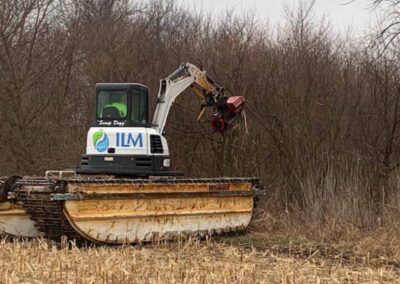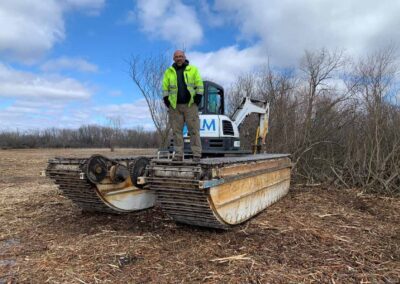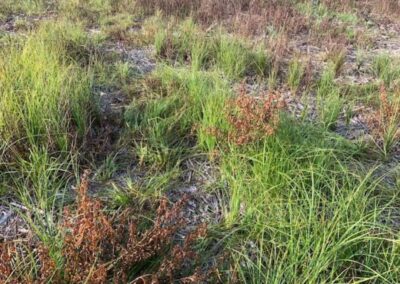PROJECT
Hackmatack National Wildlife Refuge
Otrabala Parcel Tree & Brush Clearing
Location
Introduction
Services
With the grant deadline on the horizon and frozen ground never achieved, a new approach needed to be considered. Instead of using a relatively high ground pressure skid steer to mow, ILM used their amphibious excavator that, due to its low ground pressure track system, could access the wet site without compacting or disturbing the soil.

Details
Frozen ground allows ecological restoration contractors to use heavy machinery like skid steers with forestry mower attachments to remove dense stands of willows, honeysuckle, and other invasive tree species without damaging the land. Frozen ground is especially important when working in wet areas where heavy equipment will sink or otherwise significantly disturb wetland soils. The impact of our changing climate results in fewer days of frozen ground, which was the case at Hackmatack during the winter of 2023/2024.
The option to abandon machine work and complete the work by hand would have required more staff, exceeding the grant-funded project’s budget. Instead, ILM was able to employ a low ground-pressure amphibious excavator to mount the mower deck and clear invasive brush and trees less than 4 inches in diameter within the project areas (1A through 1D) as shown below. The invasive brush was shredded and left in place, with the stipulation that it should not exceed 3 inches in depth. Work took less than 30 days and was completed by the end of March 2024 after a request for a 30-day grant deadline extension.
ILM staff returned in June 2024 to treat the invasive resprouts, primarily willow and honeysuckle. Broadcast herbicide applications from June through August achieved the 95% mortality rate required by the contract terms. A seed bank of native plant species, including sedges, quickly reestablished a native plant population once invasives were removed.
Photos courtesy of Friends of Hackmatack National Wildlife Refuge



